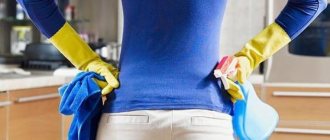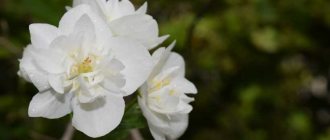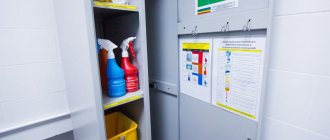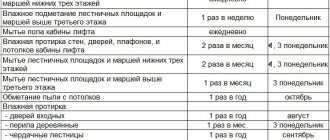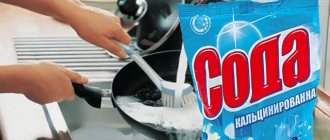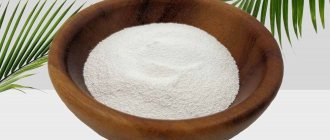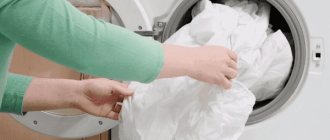You can listen to this article in full on our podcast:
We propose to consider measures to ensure hygiene standards, which should be taken into account when planning major cleaning of a preschool institution, and compile a journal of general cleaning.
Save to your computer or phone samples of cleaning of different rooms in the kindergarten, as well as requirements for sanitary maintenance (click on the pictures to open a large size):
To enlarge the picture, click on it
To enlarge the picture, click on it
To enlarge the picture, click on it
Features of cleaning in kindergarten
Traditionally, wet treatment of all surfaces and premises in preschool education organizations is done at least twice a day. Gyms - after each lesson and at least once a day.
SanPiN recommends carrying out general cleaning and washing of production, storage and sanitary premises of the catering unit, as well as bedrooms and rooms for group classes, followed by disinfection of equipment and equipment on a monthly basis.
Epidemics of infectious diseases may lead to the organization of additional cleaning activities in order to prevent their spread.
Therefore, when planning a schedule for general cleaning in the garden, you need to take into account the likelihood of it being carried out outside the schedule during seasonal outbreaks of diseases.
General cleaning of all premises and equipment must be carried out once a month.
Cleaning of window glass in preschool premises should be carried out: Windows inside and outside are cleaned as they become dirty, but at least 2 times a year.
Read carefully how to properly clean windows:
To enlarge the picture, click on it
SanPin 1378-03TERMS AND DEFINITIONS
- Acaricide is a means (drug) that ensures the death of ticks.
- A bactericidal agent is a disinfectant (preparation) that ensures the death of bacteria in a vegetative form.
- A virucidal agent is a disinfectant (drug) that inactivates viruses.
- Disinsection is the killing (or repelling) of arthropods of epidemiological and sanitary-hygienic importance in order to reduce their numbers.
- Disinsection measures are measures that ensure the regulation of the number of arthropods and include a set of engineering, technical, sanitary and hygienic, exterminatory or protective measures, as well as measures to record the number of arthropods and control the effectiveness of disinsection.
- Disinfection activities - works and services, including the development, testing, production, storage, transportation, sale, use and disposal of means, equipment, materials for disinfection, sterilization, disinfestation, deratization, as well as monitoring the effectiveness and safety of these works and services.
- Disinfection measures - work on preventive disinfection (disinfection, disinfestation, deratization), focal disinfection (current and final disinfection, disinsection, deratization), as well as disinfection, pre-sterilization cleaning and sterilization of medical products.
- Disinfection - killing on objects or removing pathogenic microorganisms and their vectors from objects.
- A disinfectant (sterilizing) agent is an active principle that provides disinfection (sterilization).
- Disinfectant (sterilizing) agent is a physical or chemical agent that includes a disinfecting (sterilizing) agent - an active substance (AS).
- Deratization is the killing (or repelling) of rodents of epidemiological and sanitary-hygienic importance in order to reduce their numbers.
- Deratization measures are measures that ensure the regulation of the number of rodents and include a set of engineering, technical, sanitary and hygienic, exterminatory and protective measures, as well as measures to count the number of rodents and monitor the effectiveness of deratization.
- An insecticide is a means (drug) that ensures the death of insects.
- Disinfection is the killing or removal of pathogenic and opportunistic microorganisms from (in) environmental objects.
- Pre-sterilization cleaning - removal of contaminants from medical products to be sterilized.
- Anti-epidemic measures are a set of sanitary-hygienic, treatment-and-prophylactic, immunological, disinfection and administrative measures aimed at preventing the occurrence, localization and elimination of emerging epidemic foci of infectious and parasitic diseases.
- Repellent is a product (drug) or device that has repellent properties against various types of arthropods and rodents.
- Rodenticide is a drug (drug) that ensures the death of rodents.
- A sporicidal agent is a disinfectant (sterilizing) agent (drug) that ensures the death of microorganism spores.
- Sterilization of products is the process of killing microorganisms of all types at all stages of development on (in) products.
- A fungicidal agent is a disinfectant (preparation) that kills fungi.
Where to recycle waste, equipment and other things in your city
Cleaning details
We come to the conclusion: when planning a schedule for general cleaning of a kindergarten, it is necessary to take into account the rules and regulations of the sanitary and epidemiological services (SES), which are developed for institutions of this type.
In this case, pay special attention to:
- the absence of children in the premises during major disinfection measures, especially during disinsection and deratization;
- dry cleaning of carpets (once a year according to standards);
- ventilation of sleeping items with open windows: pillows, mattresses and blankets;
- cleaning ventilation shafts (if contaminated);
- dry cleaning or treatment in a chamber for disinfection of bedding (annually).
Watch the video: Nutrition control in kindergarten
General cleaning log
All such events, the dates of their implementation and the choice of cleaning products are recorded by the staff of the institution in the general cleaning log.
An example of a schedule for general cleaning in a kindergarten can be the monthly filling out of journal lines according to the following scheme:
- date of planned work;
- a list of specific planned activities (washing surfaces in the kitchen of the catering unit, disinfecting bedding, calling the pest control service, etc.);
- actual date of the event;
- initials and signature of the responsible person.
When drawing up a general cleaning schedule, you should pay attention to the fact that not all available cleaning products are recommended for use in preschool-type institutions.
Compliance with hygiene standards by internal services is monitored daily by a doctor and a nurse, and the head of the kindergarten reports on this during SES inspections.
How to clean the preschool
Read other articles on the Guardian of Purity portal. We write about cleaning in kindergartens, schools, cleanliness in refrigerators, hospitals, hotels, bathrooms, etc.
A kindergarten is a premises with a high level of requirements for cleanliness, order and sanitation. The health of children depends on regular and properly organized cleaning in the kindergarten. Therefore, there are no secondary tasks or unimportant details here. Cleaning is carried out very carefully according to the drawn up plan in compliance with the sanitary work schedule.
Cleaning of premises in a kindergarten can be:
During the day, wet cleaning takes place several times in the kindergarten. The procedure ensures cleanliness in groups, play and rest areas, common areas and the kitchen block.
Requirements for the kindergarten territory
The 2022 SanPiN strictly defines the standards by which land plots are selected for the construction of a preschool educational institution. The main ones include:
- location within a residential complex or residential area;
- lack of industrial enterprises nearby;
- the noise level should not exceed the norm;
- measurement of air pollution;
- the possibility of natural lighting for outdoor play areas.
Attention
In regions in the Far North, it is additionally required to equip the area with protection from wind and snow.
One of the most important conditions for designing a kindergarten yard according to SanPiN 2022 is a sufficient amount of green space. Thus, the minimum permissible level of trees and shrubs on the territory is one fifth of the entire area of the site, which is not used for development.
For your information
As a rule, such plantings are used to separate play areas or are placed along the perimeter of the courtyard along the fence, the presence of which is also required. It is strictly forbidden to plant fruit-bearing or poisonous plants on the territory.
In addition, in 2022, according to SanPiN, there are separate requirements for the design of playgrounds for kindergartens. The main ones include:
- mandatory presence of physical education sections for sports;
- availability of a minimum area, which is calculated based on the minimum 7 sq.m. for one child in the group;
- the covering of such areas should be grassy;
- It is necessary to have canopies to protect children from rain and sun;
- It is important to equip an additional area for storing strollers, sleds, skis and other vehicles with protection from rain and snow.
Additional information
Regarding cleanliness, in winter it is necessary to remove snow from the areas. In summer, when the weather is hot, vegetation should be watered at least twice a day. Sanitary cleaning of the area is carried out in the morning and evening (before the arrival and after the departure of pupils, respectively).
Instructions for cleaning premises in preschool educational institutions
The basic procedure for cleaning premises in preschool institutions is mandatory for all institutions. Guided by the rules of SanPiN, it is necessary to carry out wet treatment of floor coverings twice daily using safe detergents. Cleaning preschool premises also includes wiping dust accumulation areas, furniture, door handles and other elements.
Wet cleaning schedules in kindergartens involve washing floors at the following frequency:
Room
Periodicity
After the end of sleep
Every time after eating
Regularly after classes
All carpets found in play areas or gyms are vacuumed daily.
Cleaning the premises of a preschool educational institution includes mandatory washing of objects with which children come into contact. These include toys, sports equipment, furniture, etc. Tables must be washed with hot water and soap before and after each meal. Chairs and changing tables for babies are also cleaned.
Sports equipment is wiped down after each lesson, with special attention paid to mats: they are cleaned with a damp rag and a soap-soda solution. The preschool cleaning schedule, which can be downloaded from specialized resources, also includes daily washing of toys. For this purpose, special containers are allocated, which are marked accordingly.
Cleaning of preschool premises includes daily disinfection of bathrooms. Toilets, cisterns, washbasins, taps and handles are washed with soap or other safe detergents approved for regular use. Bathtubs and shower trays are cleaned every day using brushes and cleaning products. Pots are cleaned after each use using brushes and specialized products.
Important!
All chemicals, detergents, as well as containers for their dilution must be labeled and stored out of the reach of children.
Cleaning preschool premises: features of disinfection of catering units
The kitchen in a kindergarten is a room on the cleanliness of which the safety of each child depends. There are a number of requirements that are put forward to food products, the characteristics of their preparation and storage, as well as to the personnel themselves. Thus, every food service worker must have a health certificate and maintain personal hygiene. Cleaning of premises in preschool institutions includes mandatory daily cleaning of the kitchen, as well as adherence to the rules for washing dishes.
Dishes for kindergarten workers and pupils should be kept separately. Each element is subject to labeling, is used only in accordance with its intended purpose and is washed in accordance with established requirements. For this, two-section baths are used: in one of the sections, equipment is washed with water at a temperature of 40°C with detergents, in the other, it is rinsed with water pressure at a temperature of 65°C.
How to sign bed linen?
Starting from January 1, 2022, labeling of bed linen
and other light industrial goods will become mandatory.
... In product codes you need to indicate:
- country of production;
- code and trademark;
- two nomenclature symbols;
- age category.
Interesting materials:
Is it possible to get your ears pierced at six months? Is it possible to skip a year after school? Is it possible to give birth at 41? Is it possible to create your own skin in CS GO? Is it possible to cut a baby's hair up to one year old? Is it possible to cut a boy's hair under one year old? Is it possible to cut the hair of a baby under one year old? Is it possible to leave school in the middle of the year? Is it possible to retake the exam this year? Is it possible to breed a bitch at 4 years old?
